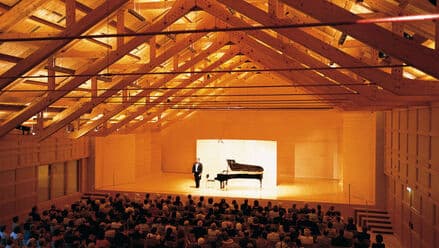Bruno Battisti D’Amario: 4 Impressioni
Italian composer Bruno Battisti D’Amario (b. 1937) did his musical training at the Conservatorio Musicale di Santa Cecilia in Rome, before working with Ennio Morricone on his film soundtracks. He was lead guitarist on both classical and electric instruments for Morricone and the two worked together for more than 20 years.

Bruno Battisti D’Amario
He was also professor of guitar in Italian conservatories in Pescara, Naples, Florence and Rome, while also having an international performing career. His writing for the guitar included works for solo guitar, one for guitar duo, and many chamber and orchestral works.
His work Quattro Impressioni devotes one movement to each of four different impressionist painters: Monet, Van Gogh, Renoir, and Degas. No specific works are cited, but just as each artist has his own style, D’Amario’s movements each represent a different world.
Claude Monet (1840–1926) is known for his outdoor works, including his unfinished Le Déjeuner sur l’herbe (Luncheon on the Grass), a response to Manet’s painting of the same title featuring dressed artists and naked models.

Monet: Le Déjeuner sur l’herbe, central panel, 1865–1866 (Musée d’Orsay)
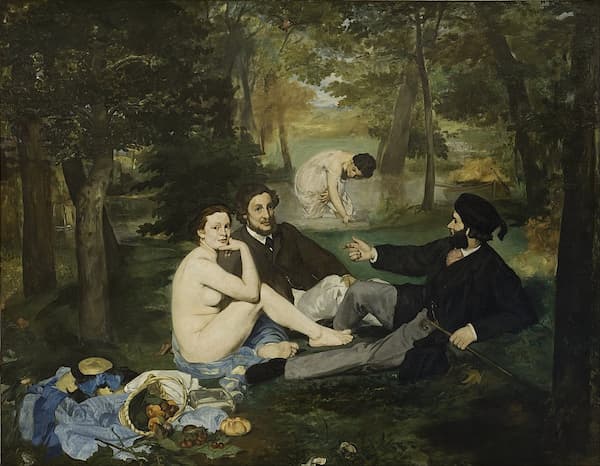
Manet: Le Déjeuner sur l’herbe, 1863 (Musée d’Orsay)
Both Monet and Manet were seeking the same goal: the depiction of life-size figures in a natural setting, but only Manet was able to complete his work. Manet’s work was refused for showing at the 1863 Salon, but it was shown at the Salon des Refusés and was the subject of much derision while serving as the main attraction. Monet’s work, on the other hand, even in its incomplete state, shows 12 people (in the projected complete work) in a similar forest glade, but with more realistic and natural light effects, whereas Manet’s appears to use studio light. Monet avoided the artificialities of Manet and achieved luminosity in his work.
It was a Monet painting, Impressions, Sunrise, of 1872 that gave its name to the Impressionist movement.
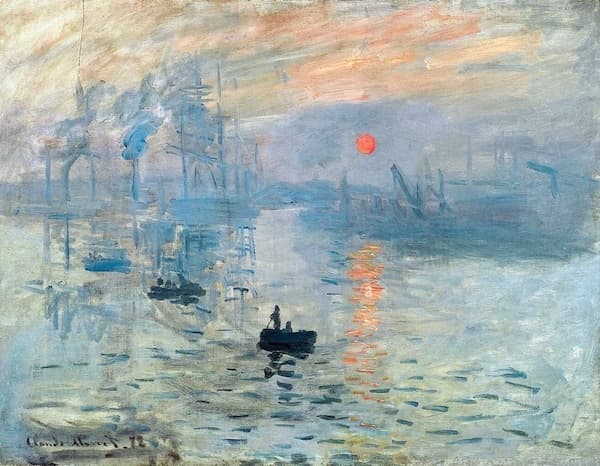
Monet: Impression, Sunrise, 1872 (Paris: Musée Marmottan Monet)
In his music, D’Amario starts with a simple descending line that gets more complex as we fall deeper into the music and the art.
Bruno Battisti D’Amario: 4 Impressioni – No. 1 Monet (Adriano Sebastiani, guitar)
The second movement, Van Gogh, takes us to the difficult side of painting—the madness and wildness of the painter. In the paintings of Vincent Van Gogh (1853–1890), Monet’s naturalism is transformed through the use of bold colours and dramatic brushwork, which would be the key to the following Expressionist movement.
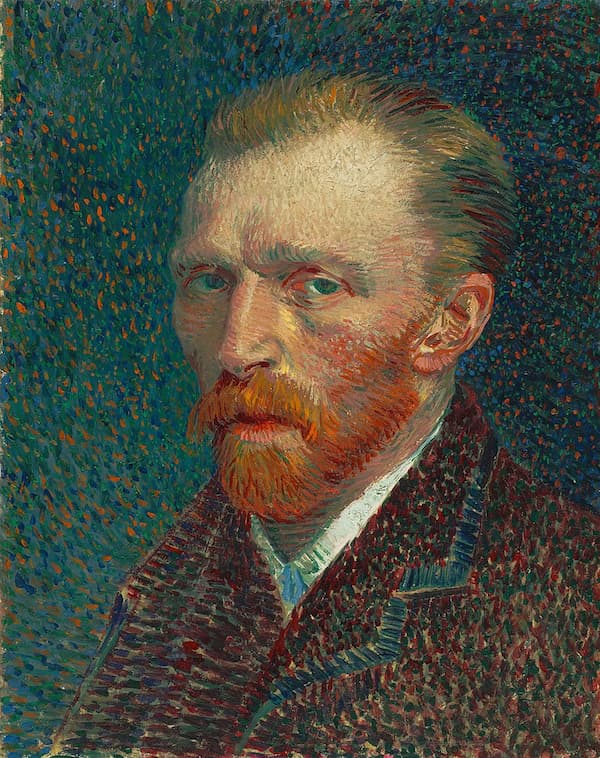
Van Gogh: Self-Portrait, ca 1887 (Art Institute of Chicago)
D’Amario’s music for Van Gogh is sketchier, less filled out, yet still able to give us a picture of our subject. Dissonance takes a more important role.
Bruno Battisti D’Amario: 4 Impressioni – No. 2 Van Gogh (Adriano Sebastiani, guitar)
The third movement, dedicated to Auguste Renoir (1841–1919), takes us back to the light-dappled work of that earlier generation of Impressionists. In La Balançoire (The Swing) we can see Impressionism in the play of light, the lack of definition in the people, and the overall achievement of play.

Renoir: La Balançoire, 1876, (Paris: Musée d’Orsay)
D’Amario returns to a more gentle style for Renoir.
Bruno Battisti D’Amario: 4 Impressioni – No. 3. Renoir (Adriano Sebastiani, guitar)
The final movement, dedicated to Edgar Degas (1834–1917), brings us to the founder of Impressionism. Personally, he rejected the term ‘impressionist’, preferring to refer to his style as ‘realism’. He kept his art inside and did not do outdoor paintings as so many others in the impressionist style did. He is best known for his paintings of dancers.
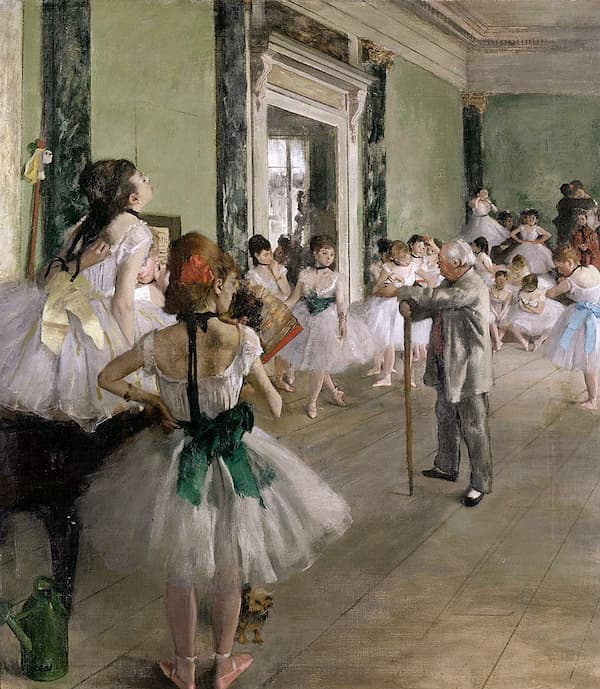
Edgar Degas: La Classe de danse, 1874–1876 (Paris: Musée d’Orsay)
D’Amario seems to place us in a dance class, rising and falling en pointe as directed by the teacher. The dancers move and repeat, moving forward and back across the floor.
Bruno Battisti D’Amario: 4 Impressioni – No. 4 Degas (Adriano Sebastiani, guitar)
In his work Quattro Impressioni, D’Amario has created a world of the late 19th century, full of imagery and motion. Light and shadow. Glimpses of the world out of the corner of our eye, not fully seen but still understood.
For more of the best in classical music, sign up for our E-Newsletter



